
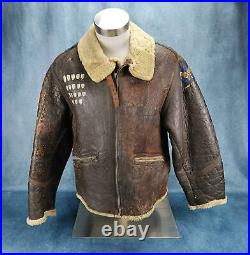

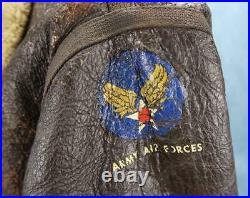

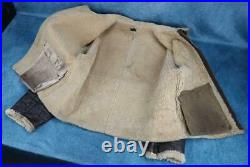
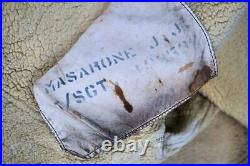
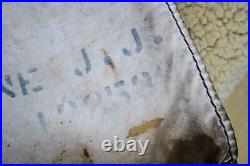
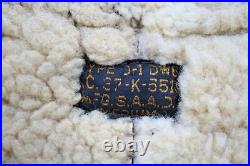
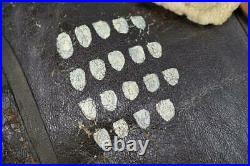




WW2 officer US Army Air Force Corp leather D1 bomber jacket USAF DAKOTA QUEEN. Another original item from. Here is your chance to own an incredible D1 bomber jacket from the European Theater of Operations and from within a very famous unit. The jacket is named on the underside of the interior pocket and has not been researched. D1’s were typically preferred by ground crew personnel. The individual bombs painted on the jacket as well as the text were done with a brush and I have taken a loupe to show the legitimacy of this paint. The woman pinup figure was done in airbrush and I have shown the details of this work as well. One exterior pocket zipper was period replaced. The jacket is hard worn but a desirable size and has the most impressive imagery. A great looking D-1 in good overall condition and ready for your collection. A few interesting excerpts from some Online research. On McGovern’s December 15 mission over Linz, his second as pilot, a piece of shrapnel from flak came through the windshield and missed fatally wounding him by only a few inches. [46] The following day on a mission to Brüx, he nearly collided with another bomber during close-formation flying in complete cloud cover. [47] The following day, he was recommended for a medal after surviving a blown wheel on the always-dangerous B-24 take-off, completing a mission over Germany, and then landing without further damage to the plane. [48] On a December 20 mission against the koda Works at Pilsen, Czechoslovakia, McGovern’s plane had one engine out and another in flames after being hit by flak. Unable to return to Italy, McGovern flew to a British airfield on Vis, a small island in the Adriatic Sea off the Yugoslav coast that was controlled by Josip Broz Tito’s Partisans. The short field, normally used by small fighter planes, was so unforgiving to four-engined aircraft that many of the bomber crews who tried to make emergency landings there perished. But McGovern successfully landed, saving his crew, a feat for which he was awarded the Distinguished Flying Cross. On March 14 McGovern had an incident over Austria in which he accidentally bombed a family farmhouse when a jammed bomb inadvertently released above the structure and destroyed it, an event that haunted McGovern. [54] Four decades later, after a McGovern public appearance in that country, the owner of the farm approached the media to let the senator know that he was the victim of that incident but that no one had been hurt and the farmer felt that it had been worth the price if that event helped achieve the defeat of Nazi Germany in some small way. McGovern was greatly relieved. April 25 saw McGovern’s 35th mission, which marked fulfillment of the Fifteenth Air Force’s requirement for a combat tour, against heavily defended Linz. The sky turned black and red with flak McGovern later said, “Hell can’t be any worse than that” and the Dakota Queen was hit multiple times, resulting in 110 holes in its fuselage and wings and an inoperative hydraulic system. McGovern’s waist gunner was injured, and his flight engineer was so unnerved by his experience that he would subsequently be hospitalized with battle fatigue, but McGovern managed to bring back the plane safely with the assistance of an improvised landing technique. I never grade my items as mint, even though may be. If for any reason you require additional photos, please do not hesitate to ask. View My Other Items For Sale. Auctiva offers Free Image Hosting and Editing. Auctiva gets you noticed! Track Page Views With. Auctiva’s FREE Counter. The item “WW2 officer US Army Air Force Corp leather D1 bomber jacket USAF DAKOTA QUEEN” is in sale since Tuesday, January 19, 2021. This item is in the category “Collectibles\Militaria\1919-38\Original Period Items”. The seller is “william_kramer” and is located in Naperville, Illinois. This item can be shipped worldwide.


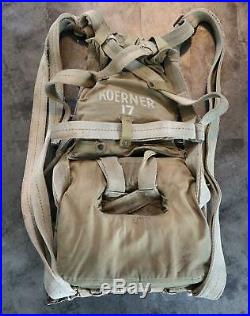

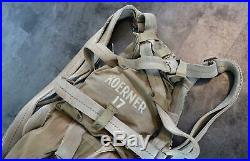

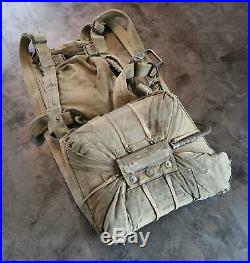
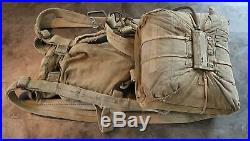
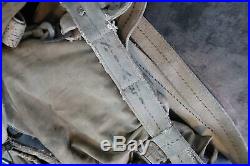
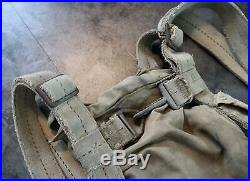

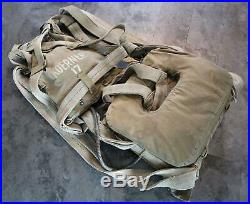

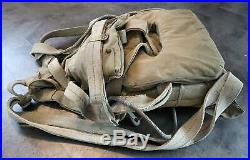

WW2 US AN6510 seat military combat parachute pilot USAF Army Air force corp NAME. Another original item from. Not only do you have a WW2 dated packed parachute but you also have the entire harness here. Doesn’t get much better than this.. The story begins on the 22nd December 1939 at a wartime conference to discuss bombsight policy. A request was made by Air Chief Marshal Sir Edgar Ludlow-Hewitt, Air Officer Commanding Bomber Command for a new bombsight. He stated that the existing bombsights in service or about to enter service, did not meet the requirements of his Command. He wanted a bombsight that did not require such a long run up to the target and gave his pilots an opportunity to engage in evasive action on the bombing run. This defeat was to have major consequences for the conduct of WW2 as a whole. It marked the time when night operations became the major policy of the RAF Bomber Command, the point when radar was first used to detect raiding RAF bombers attacking main land Germany and the birth of the Mk XlV bombsight. Although later correspondence records the fact that the AOC did make the request during this meeting, the detailed minutes fail to record his request although the volunteering of Prof. Blackett to design a sight to meet his needs was noted. Other documents of the time refer to this request by Sir Edgar Hewitt and so the need for the highest security may have lead for its omission from the minutes. Through the influence of others present at the meeting he quickly obtained laboratory and engineering facilities at Royal Aircraft Establishment, Farnborough where he could design and initially develop the new bombsight which he based upon the principles of the existing CSBS Mk lX bombsight. Professor Blackett was an eminent physicist of the time and in his capacity as a scientific advisor to the Air Ministry was present at the meeting. He had volunteered to design a bombsight that would meet the requirements of A O C Bomber Command. Thus was born the Blackett Bombsight. From that day forward, the proposed bombsight had an enthusiastic reception from the RAF and Air Ministry officials before even the first prototype was built. His new bombsight proved to be the significant improvement that RAF Bomber Command required. The proposal met in full the requirements of the A. It was first known as the Blackett sight and later as the MkXlV. It is interesting to note that it was first described as a medium altitude stabilised bombsight to be used within the 5,000 to 10,000 feet range. Later, the maximum altitude for which the sight was designed was 20,000 ft and later still increased to 25,000 ft. The first prototype known as the Mk Xll, consisted of the sighting head only with a second member of the crew feeding data into the sight. This was declared undesirable and resulted in a computer cabinet being designed and built which allowed the sight to be operated by the bomb aimer only. This was designated the MkXlV. When the concept of the MkXlV had been proved, Prof Blackett left the project team for other important work in Coastal Command. Braddick took his place and was later nominated by Blackett as the co-inventor of the sight. At an early stage in its trials at the Aeroplane and Armament Establishment, Boscombe Down; it became recognised as the first bombsight whether British, German or American which offered reasonable accuracy in conjunction with a wide degree of tactical freedom. The tachometric bombsights such as the ABS Mk2, the later SABS and the American Norden with their longer run-ups were preferably used at heights above 21,000 ft to reduce the risk from anti aircraft fire.. This height that time was above the maximum service ceilings of the new four engine bombers, the Halifax, Stirlings and Manchesters. The searchlight and gunnery defences surrounding a vital German target were often sited to take advantage of the short period when the attacking bomber had to fly straight and level to use in order to use its sight to accurately bomb the target. The shorter the run up to the target, the less opportunity it gave the anti aircraft guns and searchlights to aim at the bomber. The new bombsight was required to be manufactured in quantity to equip the new heavy and medium bombers in production for Bomber Command. It was unique in that it could be built using relatively lower grade labour than either the Norden or the British Automatic bombsights. Both these bombsights required a higher proportion of input from high grade instrument makers in their assembly and led to considerable delays in the production of the Norden. The redesign of the Norden for mass production resulted in the introduction of significant errors which eventually affected the performance of the sight in USAAF service. The Mk XlV has another little known advantage over its predecessor the ABS Mk ll, in that its bulk was smaller and was less of an impediment to the view through the clear bombing panel by the prone bomb aimer. A clear view through this panel was also important as it was used for map reading. This problem was so serious that consideration was given to providing with each bomber an alternative nose section with the front turret omitted giving space for a larger bombing panel. With the prototypes of the bombsight operating satisfactorily, the enthusiasm continued for its future use in Bomber Command. This contrasted with the reception of its predecessor, the Automatic Bombsight that was received with little optimism for its eventual success. At an early stage in its development, steps had to be taken to provide large quantities of the sights to meet the expansion of Bomber Command. The decision was made therefore to sub-contract production of the MkXlV to the USA, which would be additional to the output of British companies and also gain access to a much larger pool of labour. Sperry Gyroscope Company of USA were approached by the British Purchasing Commission in Washington. This company already had many years experience in manufacturing bombsights which now included the S-1 tachometric bombsight then in production for the USAAF. This bombsight was designed to supplement the production of the Norden, which at that time was in chronic short supply for aircraft of the US Navy and United States Army Air Force and the subject of much controversy between those services. Mr Vose of Sperry Gyroscopes of America expressed considerable interest in the MkXlV sight. He claimed that his company would be able to redesign the sight for mass production and in so doing, enhance its performance. He stated that at that time his company had development staff immediately available to undertake this work now that their Sperry-0-1 had largely completed development. He requested a set of drawings to be made available to his company with a sample bombsight being made available as soon as possible. Before these drawings could be handed over the question of the patents involved had to be considered. Professor Blackett became involved once more with Dr Braddick. Dr Braddick of whom little is now known, had also played a leading part in the development of the SABS MllA and also the cancelled SABS Mklll. This former sight was in final stages of development around about the same time. Although manufactured in small quantities, (less than 1,000) it was used very successfully by 617 Squadron in its precision bombing. It was a further development of the generally unpopular Automatic Bombsight. Vose of Sperry, in making his case for the manufacture under license of the MkXlV optimistically implied that the USAAF would be interested in acquiring the bombsight for use on some of its types of bombers. Later an old Hudson was indeed equipped with a Mk XlV/T1 but the USAAF rejected it because of the requirement to set manually, a wind speed and direction and for lack of connection to the aircraft through the automatic pilot. These requirements were a feature of the Norden and Sperry bombsights. The decision was made to subcontract the manufacture the Mk XlV to Sperrys where the American version would be known as the T1 bombsight. When the initial development work had been completed by Sperrys they in turn subcontracted the work to A. C Spark Plug Company at their Flint plant in Michigan. This company was a division of General Motors. This decision was probably due to the pressure on their Sperry USA factories in producing a large number of vital products for the American expansion of their own armed services. Throughout the contract, Sperry production engineers supervised the production at the A. C Spark Plug plant. Some components such as the gyros were supplied ready to install by Sperrys. The section of industrial history which deals with the development and production of equipment for the armed services of any nation is very rarely recorded in any detail; company archives rarely survive for more than a few years and are often not available to the historian. Sparkplug Company of Flint, Michigan was no exception to this rule and the author has been very fortunate in being contacted by Mr George A. Krepps in the USA who was an executive at the plant in WW2 throughout the period of the contract. His job was to supervise the quality control functions relative to subcontracted incoming sub-assemblies, final sight assembly and final test. His detailed recollections provide the basis for this article. The plant provided at that time a number of products to the aircraft manufacturers and government defence departments such as sub- assemblies for the Sperry S-1 Tachometric bombsight. They were also building gun sights for fighter and bomber aircraft that were based upon British designs subcontracted to the Americans. There were also, of course, millions of spark plugs produced for use in both civilian and military internal combustion engines. The RAF Air Staff in agreeing to these arrangements hoped that the American bombers produced in the USA would arrive in Britain with the MkXlV/T1 already in installed in their bombers. Work on preparing the bombsight for mass production started in May 1942 with the first T1 being ready for test in November that year. Initially, Sperry provided three production engineers to work with A. Spark Plug engineers in the reworking of the drawings so as to break the bombsight and sighting head mechanisms into sub-assemblies. They suggested improved production methods and provided the criteria to be used. Sperry took steps to ensure that test procedures and equipment met Sperry standards by the training of staff and supervisors. Changes were made in the overall design of the computer cabinet to reduce the number of manufacturing operations required. The tubular frame which surrounded the computer cabinet was modified to reduce the amount of welding necessary.. All threads used on components were changed to American standard threads. Die castings were extensively used where ever possible in the sub-assemblies. Sintered oilite sleeve bearings replaced ball bearings. The higher standard machine and cutting tools available to the Americans further improved the output. When it appeared to Sperrys that A. Spark Plug had the contracts under control, they arranged with the British Purchasing Commission in Washington to place further orders directly with A. The twelve main sub- assemblies were manufactured by 12-15 sub-contractors of diverse backgrounds such as the manufacturers of pinball machines, cameras, typewriters, and thermostats. A high proportion of female labour was employed, reaching 80%. With so many diverse sub-contractors involved, careful inspection procedures had to be put in place by Sperry. In particular, inspection procedures had to ensure the correct alignment of the sub-assemblies prior to final assembly at the Flint Plant. At the Flint plant, an assembly line was installed from incoming post inspection stores with a line drop at each assembly station for fitting the scheduled assemblies. The final testing of the completed units was carried out in five vacuum chambers approximately 900 x 1200 x 900 mm. In these chambers could be simulated the bombing operation with climb, glide, air speed and cross wind direction. Shaft outputs for the sighting heads were also recorded. The bombsight was tested at 1000 ft levels to 20,000 ft. The sighting head final test comprised mounting the head on an elevated platform to about 2.4 m above floor level. The input into the sighting head from the computer cabinet was simulated together with specified limits of roll. The performances of both sighting head and computer cabinets were checked to meet the specification. The figures were recorded on charts supplied with each computer cabinet. After final testing the finished computer cabinet or sighting head was mounted in a steel cabinet ready for dispatch. In August 1943 Sperry published a technical manual describing in considerable detail the T1 bombsight which is now in the possession of the author. The manual recorded the design at that one point in time; when the gyros were air suction driven. In 1944, and from Serial No 18,000, Sperry electrically driven units replaced the air suction gyros. These were used in all succeeding developments of the T1. The manual states that separate versions were produced were as follows. 1590649 Blenheim and Wellington. 1593175 B25C & B 25D-Mitchell. In this early manual, apart from a line drawing of a single Lancaster there were no references to the Halifax, Lancaster, Manchester or Stirlings heavy bombers, yet these aircraft were to be the principal bombers of Bomber Command. C Spark Plug produced in August 1944 one model only of the bombsight. Thus technical centres in USA and UK would have set up the bombsight to suit the flying characteristics of aircraft designated to use it. A final version of the bombsight was developed to cater for all aircraft that was designated to receive this instrument. A set of loose cams were added to each sight produced which included a dedicated cam for each type of aircraft to using the T1 bombsight. The dedicated cam automatically set into the bombsight the flying characteristics of the aircraft. No attempt was made to pair up a sighting head with a particular computer cabinet. These were to remain completely interchangeable with the corresponding British units as manufactured in Britain. In fact, an RAF bomber aircraft may well have had a T1 computer cabinet, operating quite effectively without loss of accuracy, with a Mk XlV sighting head or vice-versa. An astonishing total of 23,450 T1 bomb sights were produced at the Michigan plant over the period of November 1942 until June/July 1945. When the factory was fully operational, the output reached about 54 completed bombsights per day, using two shifts of workers eight hours per day in a six day week.. From a pre-war figure of 5,000 employees at A. Spark Plug the total size of the operation grew to 20,000. Further development of the MkXlV sight in Britain appears to have been based on the T1 series of bombsights rather than the British version. Towards the end of the war bomber aircraft were flying higher and so the bombsight design had to be modified to allow for this change. In December 1944 the T1A and B versions were produced. These bombsights had a similar speed range but the effective height range was increased to 25,000 ft. The maximum climb the sight could measure had been increased from 5° to 11° and 12° respectively for yet another version. The T2 and T4 sights were developed and manufactured in Britain after the war for later aircraft and often installed in conjunction with radar devices. With the T2 the effective height range was increased to 600-25,000 ft, a speed range of 150-350 knots and a wind speed of 90 knots. The higher wind speed was to allow for the jet stream at greater heights. It now seems that MkXlV was the name universally used by RAF and Commonwealth Air Bombers for the bomb sight and most were unaware of the T1 version. However, the version most readily found today in museums and in private collections will be that of the T1 and its derivatives. I never grade my items as mint, even though may be. If for any reason you require additional photos, please do not hesitate to ask. View My Other Items For Sale. Get Supersized Images & Free Image Hosting. Create your brand with Auctiva’s. Attention Sellers – Get Templates Image Hosting, Scheduling at Auctiva. Track Page Views With. Auctiva’s FREE Counter. The item “WW2 US AN6510 seat military combat parachute pilot USAF Army Air force corp NAME” is in sale since Thursday, July 30, 2020. This item is in the category “Collectibles\Militaria\1919-38\Original Period Items”. The seller is “william_kramer” and is located in Naperville, Illinois. This item can be shipped worldwide.


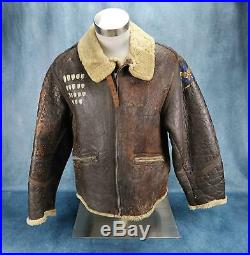

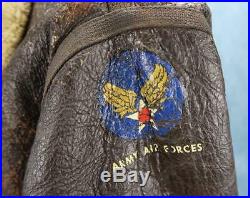

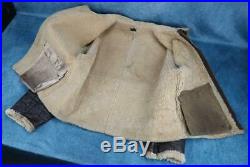


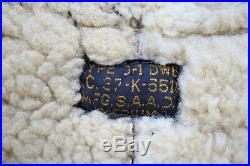
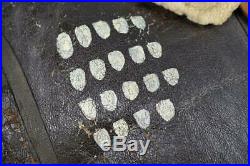




WW2 officer US Army Air Force Corp leather D1 bomber jacket USAF DAKOTA QUEEN. Another original item from. Here is your chance to own an incredible D1 bomber jacket from the European Theater of Operations and from within a very famous unit. The jacket is named on the underside of the interior pocket and has not been researched. D1’s were typically preferred by ground crew personnel. The individual bombs painted on the jacket as well as the text were done with a brush and I have taken a loupe to show the legitimacy of this paint. The woman pinup figure was done in airbrush and I have shown the details of this work as well. One exterior pocket zipper was period replaced. The jacket is hard worn but a desirable size and has the most impressive imagery. A great looking D-1 in good overall condition and ready for your collection. A few interesting excerpts from some Online research. On McGovern’s December 15 mission over Linz, his second as pilot, a piece of shrapnel from flak came through the windshield and missed fatally wounding him by only a few inches. [46] The following day on a mission to Brüx, he nearly collided with another bomber during close-formation flying in complete cloud cover. [47] The following day, he was recommended for a medal after surviving a blown wheel on the always-dangerous B-24 take-off, completing a mission over Germany, and then landing without further damage to the plane. [48] On a December 20 mission against the koda Works at Pilsen, Czechoslovakia, McGovern’s plane had one engine out and another in flames after being hit by flak. Unable to return to Italy, McGovern flew to a British airfield on Vis, a small island in the Adriatic Sea off the Yugoslav coast that was controlled by Josip Broz Tito’s Partisans. The short field, normally used by small fighter planes, was so unforgiving to four-engined aircraft that many of the bomber crews who tried to make emergency landings there perished. But McGovern successfully landed, saving his crew, a feat for which he was awarded the Distinguished Flying Cross. On March 14 McGovern had an incident over Austria in which he accidentally bombed a family farmhouse when a jammed bomb inadvertently released above the structure and destroyed it, an event that haunted McGovern. [54] Four decades later, after a McGovern public appearance in that country, the owner of the farm approached the media to let the senator know that he was the victim of that incident but that no one had been hurt and the farmer felt that it had been worth the price if that event helped achieve the defeat of Nazi Germany in some small way. McGovern was greatly relieved. April 25 saw McGovern’s 35th mission, which marked fulfillment of the Fifteenth Air Force’s requirement for a combat tour, against heavily defended Linz. The sky turned black and red with flak McGovern later said, “Hell can’t be any worse than that” and the Dakota Queen was hit multiple times, resulting in 110 holes in its fuselage and wings and an inoperative hydraulic system. McGovern’s waist gunner was injured, and his flight engineer was so unnerved by his experience that he would subsequently be hospitalized with battle fatigue, but McGovern managed to bring back the plane safely with the assistance of an improvised landing technique. I never grade my items as mint, even though may be. If for any reason you require additional photos, please do not hesitate to ask. View My Other Items For Sale. Auctiva offers Free Image Hosting and Editing. Auctiva gets you noticed! Track Page Views With. Auctiva’s FREE Counter. The item “WW2 officer US Army Air Force Corp leather D1 bomber jacket USAF DAKOTA QUEEN” is in sale since Monday, April 13, 2020. This item is in the category “Collectibles\Militaria\1919-38\Original Period Items”. The seller is “william_kramer” and is located in Naperville, Illinois. This item can be shipped worldwide.



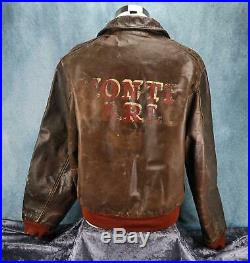

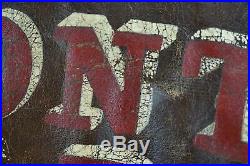


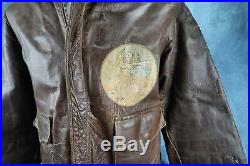
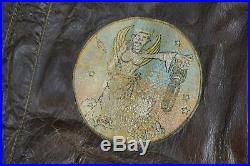
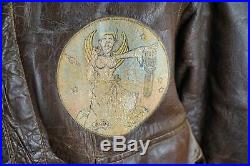
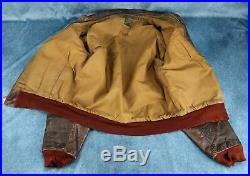
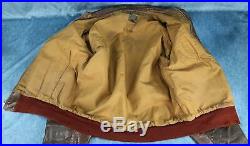
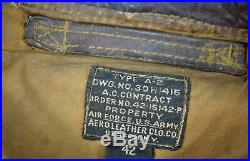

WWII officer US Army Air Force Corp leather A2 bomber jacket USAF MONTE CARLO 42. Another original item from. Here is your chance to own an incredible A-2 bomber jacket with “Monte Carlo” painted on the back. B-24 liberator bomb group – 722nd Heavy Squadron, 450th Bomb Group, 47th BW, 15th Air Force. European Theater of Operations. Size 42 A2 leather jacket manufactured by Aero Leather Clo. Beacon, NY and has the soldier’s serial numbre J 3484 stamped on the interior lining. The 722nd leather patch depicts a winged angel dropping a bomb. The patch does exhibit some crazing to the leather and there is a cracked dry spot in the back shoulder area as can be seen in the photos. Leather patch is correctly machine-sewn through the lining. Front zipper and pocket snaps are fully functional. The jacket is hard worn but a desirable size. And with a “Talon” zipper system. Reat looking A-2 in good overall condition and ready for your collection. I never grade my items as mint, even though may be. If for any reason you require additional photos, please do not hesitate to ask. View My Other Items For Sale. Get images that make Supersized seem small. Tailor your auctions with Auctiva’s. Track Page Views With. Auctiva’s FREE Counter. The item “WWII officer US Army Air Force Corp leather A2 bomber jacket USAF MONTE CARLO 42″ is in sale since Wednesday, February 26, 2020. This item is in the category “Collectibles\Militaria\1919-38\Original Period Items”. The seller is “william_kramer” and is located in Naperville, Illinois. This item can be shipped worldwide.




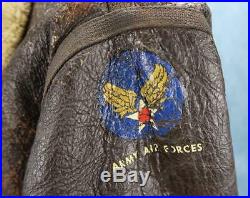

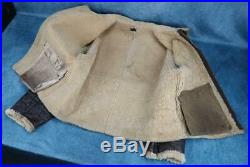
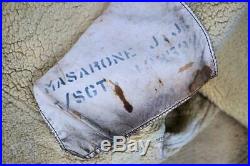
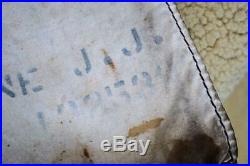
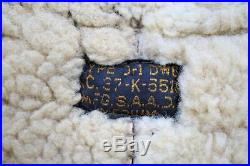





WW2 officer US Army Air Force Corp leather D1 bomber jacket USAF DAKOTA QUEEN. Another original item from. Here is your chance to own an incredible D1 bomber jacket from the European Theater of Operations and from within a very famous unit. The jacket is named on the underside of the interior pocket and has not been researched. D1’s were typically preferred by ground crew personnel. The individual bombs painted on the jacket as well as the text were done with a brush and I have taken a loupe to show the legitimacy of this paint. The woman pinup figure was done in airbrush and I have shown the details of this work as well. One exterior pocket zipper was period replaced. The jacket is hard worn but a desirable size and has the most impressive imagery. A great looking D-1 in good overall condition and ready for your collection. A few interesting excerpts from some Online research. On McGovern’s December 15 mission over Linz, his second as pilot, a piece of shrapnel from flak came through the windshield and missed fatally wounding him by only a few inches. [46] The following day on a mission to Brüx, he nearly collided with another bomber during close-formation flying in complete cloud cover. [47] The following day, he was recommended for a medal after surviving a blown wheel on the always-dangerous B-24 take-off, completing a mission over Germany, and then landing without further damage to the plane. [48] On a December 20 mission against the koda Works at Pilsen, Czechoslovakia, McGovern’s plane had one engine out and another in flames after being hit by flak. Unable to return to Italy, McGovern flew to a British airfield on Vis, a small island in the Adriatic Sea off the Yugoslav coast that was controlled by Josip Broz Tito’s Partisans. The short field, normally used by small fighter planes, was so unforgiving to four-engined aircraft that many of the bomber crews who tried to make emergency landings there perished. But McGovern successfully landed, saving his crew, a feat for which he was awarded the Distinguished Flying Cross. On March 14 McGovern had an incident over Austria in which he accidentally bombed a family farmhouse when a jammed bomb inadvertently released above the structure and destroyed it, an event that haunted McGovern. [54] Four decades later, after a McGovern public appearance in that country, the owner of the farm approached the media to let the senator know that he was the victim of that incident but that no one had been hurt and the farmer felt that it had been worth the price if that event helped achieve the defeat of Nazi Germany in some small way. McGovern was greatly relieved. April 25 saw McGovern’s 35th mission, which marked fulfillment of the Fifteenth Air Force’s requirement for a combat tour, against heavily defended Linz. The sky turned black and red with flak McGovern later said, “Hell can’t be any worse than that” and the Dakota Queen was hit multiple times, resulting in 110 holes in its fuselage and wings and an inoperative hydraulic system. McGovern’s waist gunner was injured, and his flight engineer was so unnerved by his experience that he would subsequently be hospitalized with battle fatigue, but McGovern managed to bring back the plane safely with the assistance of an improvised landing technique. I never grade my items as mint, even though may be. If for any reason you require additional photos, please do not hesitate to ask. View My Other Items For Sale. Auctiva offers Free Image Hosting and Editing. Auctiva gets you noticed! Track Page Views With. Auctiva’s FREE Counter. The item “WW2 officer US Army Air Force Corp leather D1 bomber jacket USAF DAKOTA QUEEN” is in sale since Wednesday, February 26, 2020. This item is in the category “Collectibles\Militaria\1919-38\Original Period Items”. The seller is “william_kramer” and is located in Naperville, Illinois. This item can be shipped worldwide.


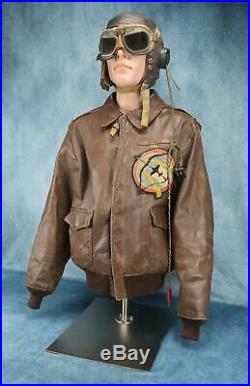
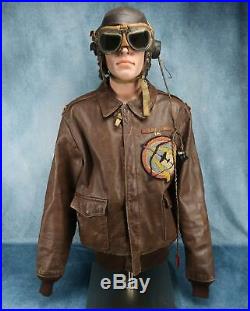
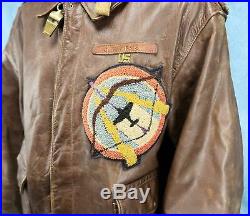
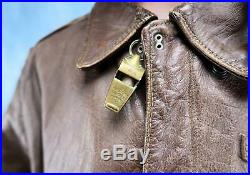
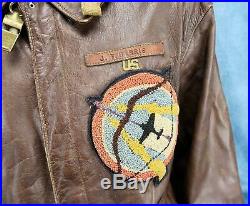
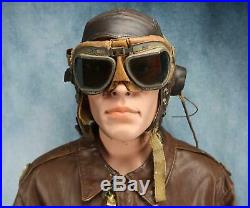
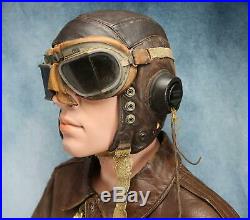

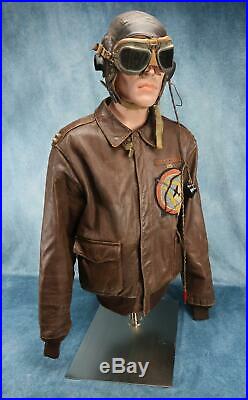
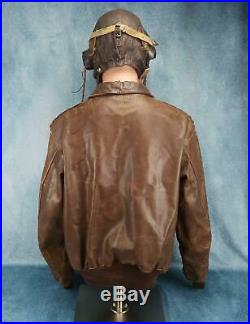
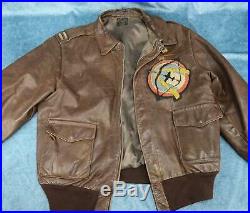
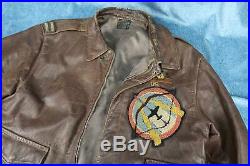

WW2 officer US Army Air Force Corp leather A2 bomber jacket USAF NAME group 44. Another original item from. Harris, a fighter pilot in the 410th Fighter Squadron, 373rd Fighter Group, 9th Air Force. He flew the famous P-47 Thunderbolt and his A-2 is with a beautiful chenille squadron insignia. Also included is the RAF Type C leather flight helmet with British RAF Mk VIII goggles which were adapted for U. The flight jacket has silver bullion embroidered Captain’s bars. The chenille 410 Fighter Squadron insignia consists of a red and white bordered light blue disc with a large drawn bow, the arrow mounted by a fighter aircraft. The interior has the original AAF woven nomenclature tag listing maker POUGHKEEPSIE LEATHER COAT CO. Poughkeepsie Leather Coat Co. The lining and cuffs are replacements and were done for the veteran to wear the jacket after the war which probably helped preserve the piece in all seriousness. The pocket contained a brass safety whistle which is also included in the listing. The flight helmet is the classic marriage of British RAF and U. AAF gear that so many 8th Air Force fighter pilots are seen with in period photos: Type “C” chamois-lined brown leather flying helmet has been modified with U. “ANB-H-1″ receivers complete with wiring loom and plug, and is complete with scarce WWII production RAF MK VIII flying goggles with RAF blue-gray strap, light brown face pad, and green tinted angled lenses in blue-gray metal frames. Absolutely guaranteed authentic and is directly from the widow of the Veteran. I never grade my items as mint, even though may be. If for any reason you require additional photos, please do not hesitate to ask. View My Other Items For Sale. Get images that make Supersized seem small. Tailor your auctions with Auctiva’s. Track Page Views With. Auctiva’s FREE Counter. The item “WW2 officer US Army Air Force Corp leather A2 bomber jacket USAF NAME group 44″ is in sale since Wednesday, February 26, 2020. This item is in the category “Collectibles\Militaria\1919-38\Original Period Items”. The seller is “william_kramer” and is located in Naperville, Illinois. This item can be shipped worldwide.






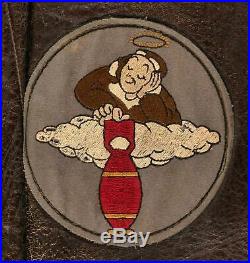
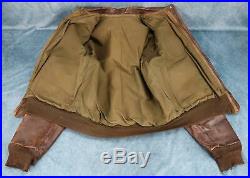

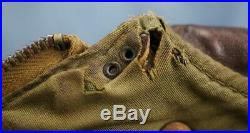
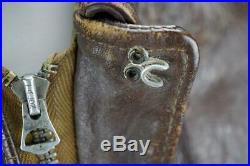

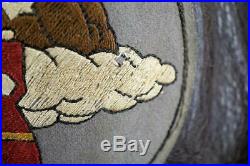


WW2 officer US Army Air Force Corp leather A2 bomber jacket USAF HELLS ANGELS. Another original item from. Here is your chance to own an incredible A-2 bomber jacket from the European Theater of Operations and from within a very famous unit. The airman that originally wore this iconic piece of aviation history was within the 303rd Bomb Group, 358th Bomb Squadron. The patch is heavily faded and portrays a bombardier wearing an angel’s halo dropping a bomb from a cloud. The 358th Bomb Squadron patch is machine-sewn through the lining. The “Talon” brand zipper and pocket snaps are fully functional. The jacket is hard worn but a desirable size and has the most impressive imagery. A great looking A-2 in good overall condition and ready for your collection. As you know the famous motorcycle gang was formed after the war from remnants of the service and for all we know this could have been one of the founding fathers. Unfortunately the name tag has been lost to time and only the initials J. Appear on the interior of the jacket. The 303rd Bombardment Group was first activated in February 1942. During World War II, the 303rd was one of the first VIII Bomber Command B-17 Flying Fortress units based out of England. The group’s “Hell’s Angels” is recognized by the USAF as the first B-17 to complete 25 combat missions in the ETO on May 13, 1943, six days before the Memphis Belle. The group went on to fly more than 300 combat missions, more than any other B-17 group in the theater. The B-17 “Knock-out Dropper” was the first aircraft in Eighth Air Force to complete 50, then 75 missions. The group was awarded the Distinguished Unit Citation for completing an attack against a heavily defended target in January 1944. The 303rd Bombardment Group was activated in February 1942 as a Boeing B-17 Flying Fortress heavy bomber group at Pendleton Field, Oregon and assigned within it was the 358th Bombardment Squadron. The group completed training by August 1942 and set sail aboard the RMS Queen Mary and arrived in Great Britain on 10 September before ferrying its planes across the Atlantic. It attacked Saint-Nazaire the following day, although its intended target was La Pallice. Its initial raids were on airfields, railroads and submarine pens in France. As one of only four Flying Fortress groups in VIII Bomber Command during late 1942 and early 1943, the 303rd participated in the development of the tactics that would be used throughout the air campaign against Germany. In 1943, the group began flying missions to Germany, participating in the first attack by American heavy bombers on a target in Germany, a raid on the submarine yards at Wilhelmshaven on 27 January 1943. From that time, it concentrated primarily on strategic bombardment of German industry, marshalling yards, and other strategic targets, including the ball bearing plants at Schweinfurt, shipyards at Bremen and an aircraft engine factory at Hamburg. The 303rd received a Distinguished Unit Citation when adverse weather on 11 January 1944 prevented its fighter cover from joining the group, exposing it to continuous attacks by Luftwaffe fighters. Despite this opposition, the unit successfully struck an aircraft assembly plant at Oschersleben. Although a strategic bombing unit, the squadron was diverted on occasion to close air support and interdiction for ground forces. It attacked gun emplacements and bridges in the Pas-de-Calais during Operation Overlord, the invasion of Normandy, in June 1944; bombed enemy troops during Operation Cobra, the breakout at Saint Lo, and during the Battle of the Bulge. It bombed military installations near Wesel during Operation Lumberjack, the Allied assault across the Rhine. Its last combat mission was an attack on 25 April 1945 against an armament factory at Pilsen. Following VE Day in May 1945 the 303rd Group was reassigned to the North African Division, Air Transport Command and moved to Casablanca Airfield, French Morocco to use its B-17 bombers as transports, ferrying personnel from France to Morocco. However, the two B-17 groups moved to Casablanca proved surplus to Air Transport Command’s needs and the squadron was inactivated in late July 1945 and its planes ferried back to the United States. During the War, the 303rd flew 364 missions, more than any other Eighth Air Force B-17 group, and one group Fort, “Hell’s Angels”, was the first to complete 25 missions. I never grade my items as mint, even though may be. If for any reason you require additional photos, please do not hesitate to ask. View My Other Items For Sale. Get images that make Supersized seem small. Tailor your auctions with Auctiva’s. Track Page Views With. Auctiva’s FREE Counter. The item “WW2 officer US Army Air Force Corp leather A2 bomber jacket USAF HELLS ANGELS” is in sale since Wednesday, February 26, 2020. This item is in the category “Collectibles\Militaria\1919-38\Original Period Items”. The seller is “william_kramer” and is located in Naperville, Illinois. This item can be shipped worldwide.

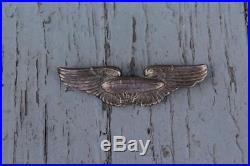
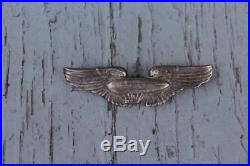
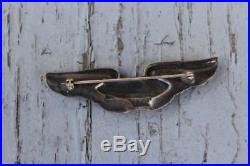
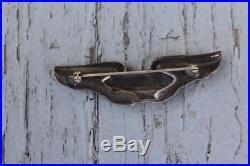

Here is a vintage Sterling Airship Airman Wings in sterling. The wings are 3 1/8 th inches across. Marked Pasquali & Co. Sterling on the back. They have some discoloration from age and Patena. Still it displays very well for its age and would be a great addition to any collection. Check out my other fine vintage Item. Auctiva Offers Free Image Hosting and Editing. Track Page Views With. Auctiva’s FREE Counter. The item “Vintage Original 1920s USAF Airship Pilots Wings Sterling Silver” is in sale since Monday, October 16, 2017. This item is in the category “Collectibles\Transportation\Aviation\Airships”. The seller is “scientificxactress” and is located in Toronto, Ohio. This item can be shipped to United States, Canada, United Kingdom, Germany, Japan, France, Australia.

































































































